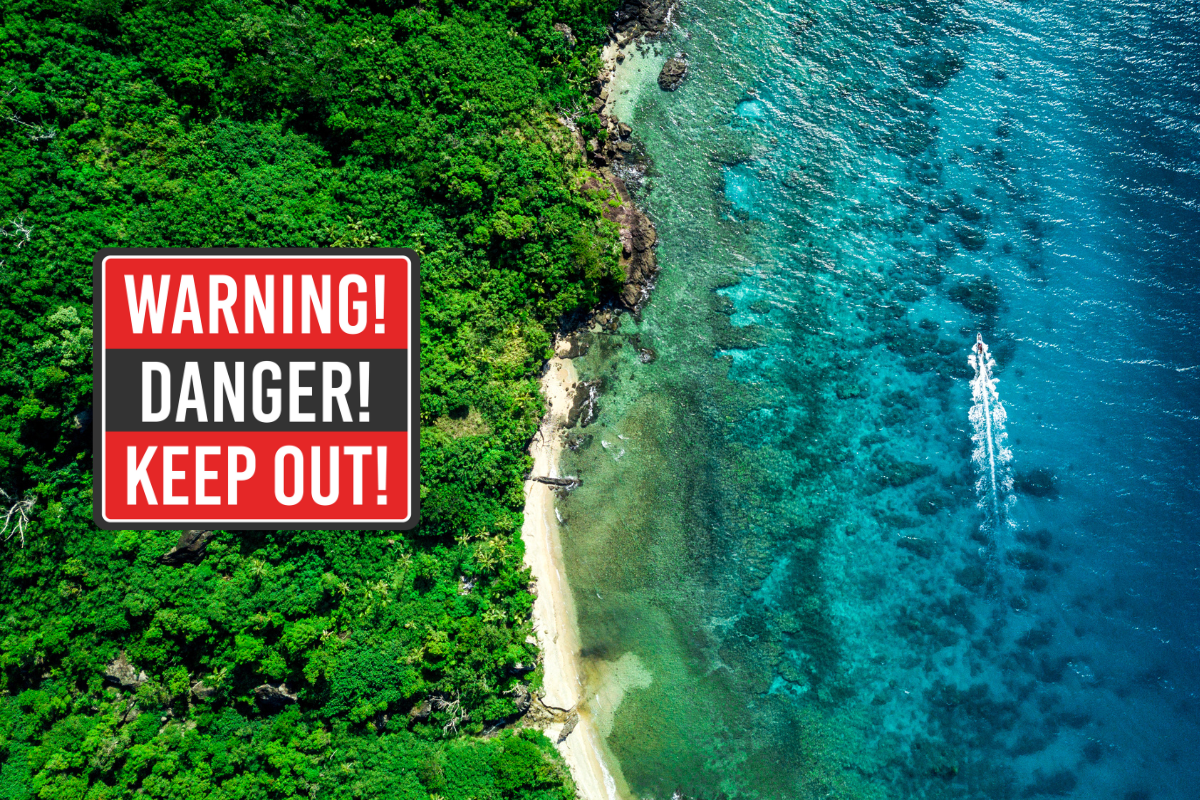
Imagine a world where isolated islands remain untouched by the modern traveler, a world where stepping onto these forbidden islands could mean danger, legal repercussions, or worse.
These islands, scattered across the globe, have captured our curiosity and fascination for decades.
In this article, we embark on a virtual journey to explore the top 10 most forbidden islands from around the world, unveiling the mysteries and the reasons why these enigmatic places remain off-limits to visitors.
1. North Sentinel Island, Andaman Islands
Forbidden by Nature and Inhabitants

Our journey begins in the Andaman Islands, an archipelago in the Bay of Bengal. Nestled among its emerald gems is North Sentinel Island, known for its isolation and its inhabitants, the Sentinelese people.
The Sentinelese have remained isolated for thousands of years, shunning contact with the outside world.
Any attempt to approach the island is met with hostility, as the Sentinelese are fiercely protective of their way of life.
This hostility, combined with the risk of introducing foreign diseases to the tribe, has led to strict restrictions on visiting North Sentinel Island.
The history of North Sentinel Island is shrouded in mystery, with the Sentinalese people’s isolation dating back thousands of years.
Historical records suggest that attempts at contact were made by explorers and traders, but the Sentinalese vehemently resisted outsiders.
The tragic event of the 19th-century British naval officer Maurice Vidal Portman kidnapping several Sentinalese individuals further intensified the isolation.
This dark episode has contributed to the island’s forbidden status, emphasizing the importance of respecting the Sentinalese desire for seclusion and safeguarding their cultural heritage.
2. Niihau, Hawaii
The Forbidden Isle

Niihau, also known as the “Forbidden Isle,” is a privately owned island in the Hawaiian archipelago.
The Robinson family, who owns Niihau, has kept it closed to the public for over 150 years, allowing only limited access to residents and invited guests.
The island serves as a sanctuary for native Hawaiian culture and traditions, and its isolation is a means of preserving the way of life of its inhabitants.
Niihau’s history is interwoven with the preservation of Hawaiian culture.
During World War II, a Japanese pilot crash-landed on Niihau after the attack on Pearl Harbor.
The islanders’ decision to support the U.S. military in capturing the pilot underscored their commitment to protecting their homeland.
This event, coupled with the Robinson family’s dedication to maintaining the island’s isolation, has played a crucial role in defining Niihau as the “Forbidden Isle.”
Preserving Niihau’s historical ties to Hawaiian resilience and loyalty remains paramount.
3. Fort Carroll Island, Baltimore
A Fortress Frozen in Time

Located in the Patapsco River near Baltimore, Fort Carroll Island is a mysterious structure shrouded in history.
Built in the mid-19th century, the fort was intended for coastal defense during the Civil War.
However, it was never fully utilized and now stands abandoned, its decaying infrastructure making it unsafe for visitors. The island remains off-limits due to its unstable condition.
Fort Carroll Island, constructed in the mid-19th century for coastal defense during the Civil War, holds a unique place in history.
Despite its intended purpose, the fort was never fully utilized, becoming a relic frozen in time.
Its abandoned state and decaying infrastructure contribute to its forbidden status, as the island poses safety risks to visitors.
Exploring the historical context of Fort Carroll Island sheds light on the challenges of repurposing and preserving historical sites for future generations.
4. Bouvet Island, Norway
The Most Remote Island on Earth

Bouvet Island, a desolate speck in the South Atlantic Ocean, holds the title of the most remote island on Earth.
This uninhabited, icy wasteland is surrounded by treacherous waters, making it nearly impossible to reach.
It is also the subject of international treaties that prohibit any military or commercial activity on the island, effectively closing it off to visitors.
Bouvet Island’s historical narrative is linked to its discovery by a French explorer in 1739.
The desolate speck in the South Atlantic Ocean became the subject of international treaties, designating it as a nature reserve.
Prohibiting military and commercial activities aims to protect the island’s pristine environment.
The historical context of these international agreements highlights the collaborative efforts to preserve Bouvet Island as a testament to global conservation initiatives for the benefit of future generations.
5. Ile Saint-Paul, France
A Forgotten French Outpost
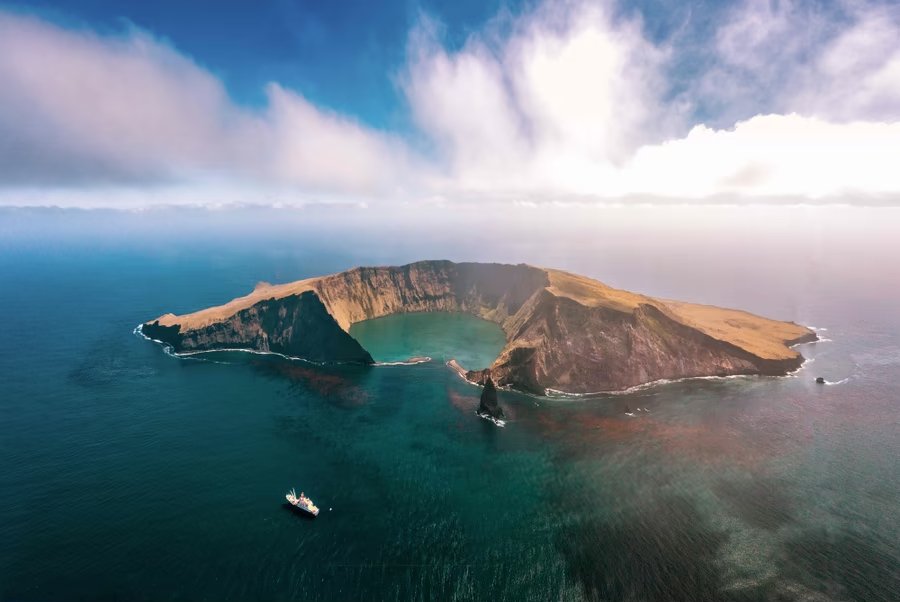
Ile Saint-Paul, a tiny volcanic island in the southern Indian Ocean, is a forgotten French outpost.
It was once used for sealing and whaling, but today it remains uninhabited.
The reason for its isolation lies in its remoteness and harsh climate, making it an inhospitable place for visitors.
The French government also restricts access to protect the fragile ecosystem of the island.
Once a hub for sealing and whaling activities, Ile Saint-Paul now stands forgotten in the southern Indian Ocean.
The harsh climate and isolation have contributed to its abandonment, emphasizing the challenges faced by historical outposts in remote locations.
French government restrictions on access underscore the importance of protecting not only the island’s historical remnants but also its fragile ecosystem.
Exploring the historical connection to maritime activities brings attention to the need for responsible conservation.
6. Poveglia, Italy
The Haunted Island
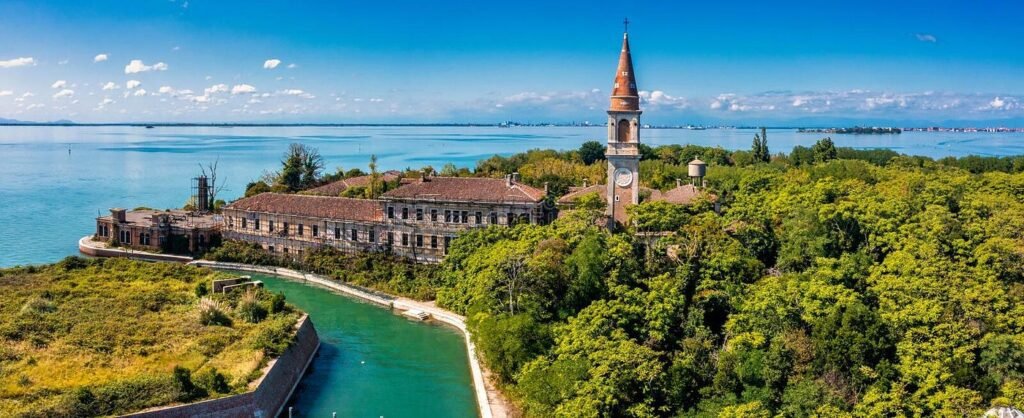
Poveglia, a small island in the Venetian Lagoon, has a dark and chilling history.
It was once used as a quarantine station during outbreaks of the plague, and it is rumored to be haunted by the restless souls of those who died on its shores.
Due to its grim past and the reported paranormal activity, the Italian government has banned public access to Poveglia.
Poveglia’s haunting history as a quarantine station during plague outbreaks adds a chilling layer to its forbidden status.
The Italian government’s decision to ban public access stems from concerns about the island’s grim past and reported paranormal activity.
Unraveling the historical threads of Poveglia’s dark episodes underscores the ethical considerations in balancing historical preservation with the island’s haunting reputation.
7. Okunoshima Poison Gas Island, Japan
A Toxic Legacy

Known by its ominous nickname, Poison Gas Island, this Japanese island is a place tainted by its dark history.
During World War II, the Japanese military conducted chemical warfare experiments on the island, resulting in lethal contamination.
The presence of unexploded munitions and deadly chemicals makes it an extremely hazardous place, and access is strictly prohibited.
During World War II, Okunoshima served as a site for chemical warfare experiments, leaving behind a toxic legacy.
The island’s dark history and the presence of unexploded munitions contribute to its forbidden status.
Understanding the historical context of wartime activities on Okunoshima emphasizes the island’s transformation from a place of tragedy to a cautionary symbol, urging the need for responsible environmental management.
8. North Brother Island, New York
A Forgotten Chapter of History

In the heart of New York City’s East River lies North Brother Island, once home to Riverside Hospital, a quarantine facility for infectious disease patients.
The island also witnessed a tragic event, the General Slocum disaster, where over 1,000 lives were lost.
Today, North Brother Island is a bird sanctuary, off-limits to the public to protect the fragile ecosystem and preserve the memories of its troubled past.
North Brother Island’s historical significance as a quarantine facility during disease outbreaks and the site of the General Slocum disaster is a poignant chapter in New York’s history.
The island’s current status as a bird sanctuary is a testament to the delicate balance between historical preservation and ecological conservation.
The island’s forbidden nature serves as a reminder of the tragedies and triumphs that have shaped its legacy.
9. Isla de las Munecas, Mexico
The Island of Dolls

Isla de las Munecas, or the Island of Dolls, located in the Xochimilco canals of Mexico City, is a place straight out of a horror story.
The island is adorned with thousands of creepy dolls hanging from trees and buildings, collected by its former caretaker.
While it attracts curious travelers, the eerie atmosphere and legends of paranormal activity have led to its reputation as a forbidden place.
The haunting history of Isla de las Munecas, with its thousands of dolls, is rooted in the legend of a caretaker who collected them to appease the spirit of a drowned girl.
This dark and eerie history has contributed to the island’s forbidden reputation, as tales of paranormal activity deter visitors.
10. Snake Island, Brazil
A Serpent’s Lair

Our journey concludes on Snake Island, Ilha da Queimada Grande, off the coast of Brazil.
This island is home to one of the world’s deadliest and most venomous snakes, the golden lancehead viper.
Its population is estimated to be one snake per square meter, making it an incredibly dangerous place for humans.
Access to Snake Island is restricted to scientific research, and even then, visitors require special permits and must be accompanied by trained personnel.
Ilha da Queimada Grande’s historical narrative is entwined with the evolution of its golden lancehead viper population.
The island’s forbidden status is justified by the danger posed by one of the world’s deadliest snakes.
Understanding the historical development of Snake Island’s unique ecosystem emphasizes the need for scientific research and strict access regulations to protect both visitors and the island’s fragile biodiversity.
Environmental Impact on These Forbidden Islands

Forbidden islands worldwide harbor delicate ecosystems that have evolved in isolation, showcasing unique biodiversity and environmental adaptations.
Preserving these ecosystems is paramount to maintaining the islands’ ecological integrity and safeguarding the rare species that call them home.
Key Considerations:
- Preserving Biodiversity: International treaties, such as the Convention on Biological Diversity, recognize the importance of preserving biodiversity on a global scale. Local regulations on forbidden islands align with these treaties to protect endemic species and maintain the unique ecosystems that make these islands ecologically valuable.
- Mitigating Climate Change Impact: Many forbidden islands, such as those in polar regions, are particularly vulnerable to climate change. The Paris Agreement and other climate-focused treaties indirectly contribute to the protection of these islands by addressing broader environmental challenges that could impact their ecosystems.
- Scientific Research Guidelines: International scientific organizations provide guidelines for responsible research in ecologically sensitive areas. Local regulations often incorporate these guidelines, allowing for valuable scientific exploration while minimizing the ecological footprint associated with human activity on these islands.
- Community Engagement and Indigenous Rights: Local regulations and international agreements increasingly emphasize the importance of engaging local communities and respecting indigenous rights in environmental conservation. This approach recognizes the role of indigenous knowledge and practices in maintaining the delicate balance of island ecosystems.
- Establishing Marine Protected Areas: Some forbidden islands are surrounded by marine environments that require protection. The establishment of marine protected areas (MPAs), guided by international agreements like the Convention on Biological Diversity, contributes to safeguarding the marine ecosystems around these islands.
Controversial Access Attempts: Tales of Those Who Tried

North Sentinel Island, Andaman Islands
The Case of John Chau (2018):
One of the most notorious attempts to access North Sentinel Island occurred in 2018 when American missionary John Chau ventured onto the island in an attempt to make contact with the Sentinalese people.
Despite warnings and legal restrictions, Chau’s unauthorized presence resulted in tragedy, as he was killed by the islanders.
This incident intensified debates surrounding the ethics of attempting access, highlighting the dangers and the potential consequences of disregarding strict regulations.
Niihau, Hawaii
The Japanese Zero Incident (1941):
In the aftermath of the attack on Pearl Harbor during World War II, a Japanese pilot crash-landed on Niihau.
The incident prompted the island’s closure to the public and heightened security measures.
The attempted access underscored the vulnerability of even the most secluded islands during times of conflict, leading to long-term restrictions to protect the island’s residents and cultural heritage.
Bouvet Island, Norway
Russian Expedition (2008):
In 2008, a Russian expedition attempted to reach Bouvet Island, defying international treaties.
The expedition aimed to establish a base for scientific research, but the Norwegian government strongly condemned the breach of agreements that prohibited any military or commercial activities on the island.
This event emphasized the challenges of enforcing international regulations and the need for collective efforts to preserve the environmental sanctity of Bouvet Island.
Future Perspectives: Will These Islands Always Remain Forbidden?

In this section, we’ll explore what might lie ahead, how changing beliefs, cool technology, and our duty to protect nature could shape the destiny of these forbidden lands.
Evolving Cultural Attitudes and Indigenous Rights:
As global perspectives on cultural diversity and indigenous rights progress, discussions surrounding access to forbidden islands, such as North Sentinel Island and Niihau, may intensify.
The challenge lies in finding a delicate balance between preserving indigenous ways of life, respecting cultural autonomy, and facilitating responsible exploration.
Sustainable Tourism and Conservation Strategies:
The future of islands like Niihau may involve ongoing dialogues about balancing cultural preservation with sustainable tourism practices.
Advances in monitoring technology could allow for non-intrusive research, promoting conservation efforts without compromising fragile ecosystems.
Climate Change and Environmental Resilience:
Climate change poses unique challenges to islands like Bouvet and Ile Saint-Paul. The impact of climate-related changes may necessitate increased conservation efforts, reinforcing strict environmental regulations to protect vulnerable ecosystems.
Technological Advancements in Exploration:
Advancements in monitoring technology, including drones and satellite imagery, may offer alternative means for studying forbidden islands without physical intrusion.
Virtual reality and remote exploration methods could provide educational experiences without compromising preservation goals.
Cultural Sensitivity and Indigenous Rights:
The future may witness a growing emphasis on cultural sensitivity and the rights of indigenous communities.
This trend could influence decisions regarding access to forbidden islands, ensuring that exploration respects the autonomy and wishes of local populations.
Global Collaboration for Preservation:
International collaboration is increasingly vital for the preservation of forbidden islands.
Shared responsibility, best practices for conservation, and respectful engagement with indigenous communities may become essential components of global efforts to protect these natural and cultural treasures.
Technological Alternatives and Education:
Advancements in technology, such as virtual reality, may offer alternatives for public education and exploration without the need for physical access.
These innovations can contribute to a deeper understanding of the history, culture, and biodiversity of forbidden islands.
Educational Outreach: Raising Awareness about Forbidden Islands
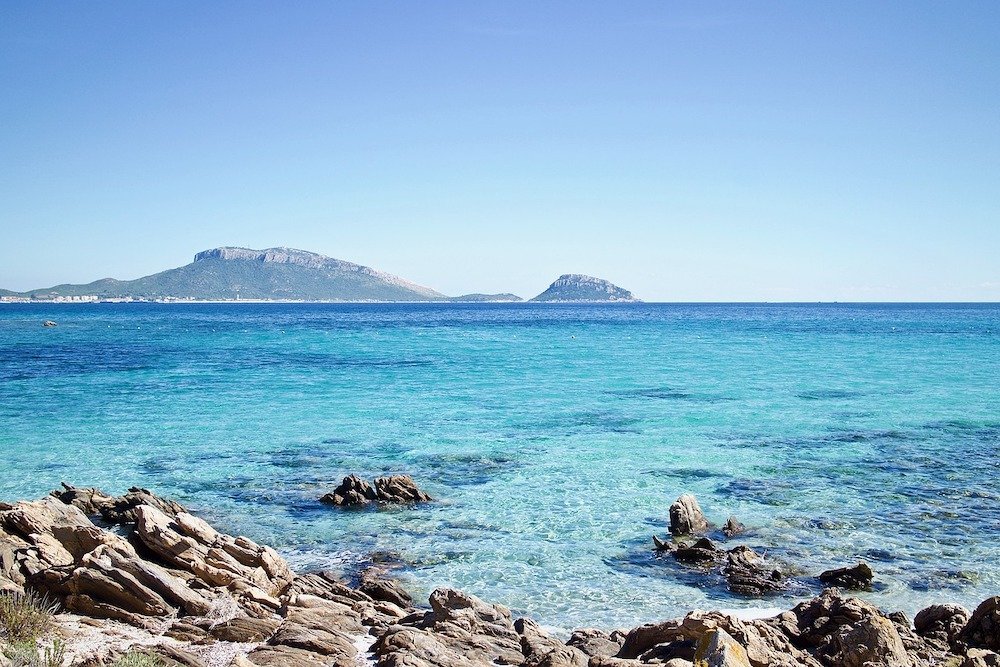
By fostering awareness, encouraging responsible curiosity, and leveraging the influence of travel communicators, we pave the way for a future where these captivating realms are admired and protected for generations to come.
In this section, we will discuss the importance of educating the public about the reasons behind the restrictions.
Preserving Cultural Heritage:
Educating the public about the reasons behind restrictions on forbidden islands is paramount to preserving cultural heritage.
Understanding the historical, ecological, and indigenous contexts helps foster a sense of respect and appreciation, encouraging responsible engagement with these sensitive areas.
Environmental Conservation:
Raising awareness about the delicate ecosystems and environmental significance of forbidden islands is crucial for garnering public support.
By comprehending the fragility of these ecosystems, individuals can become advocates for conservation, contributing to global efforts to protect these natural wonders.
Responsible Curiosity and Virtual Exploration:
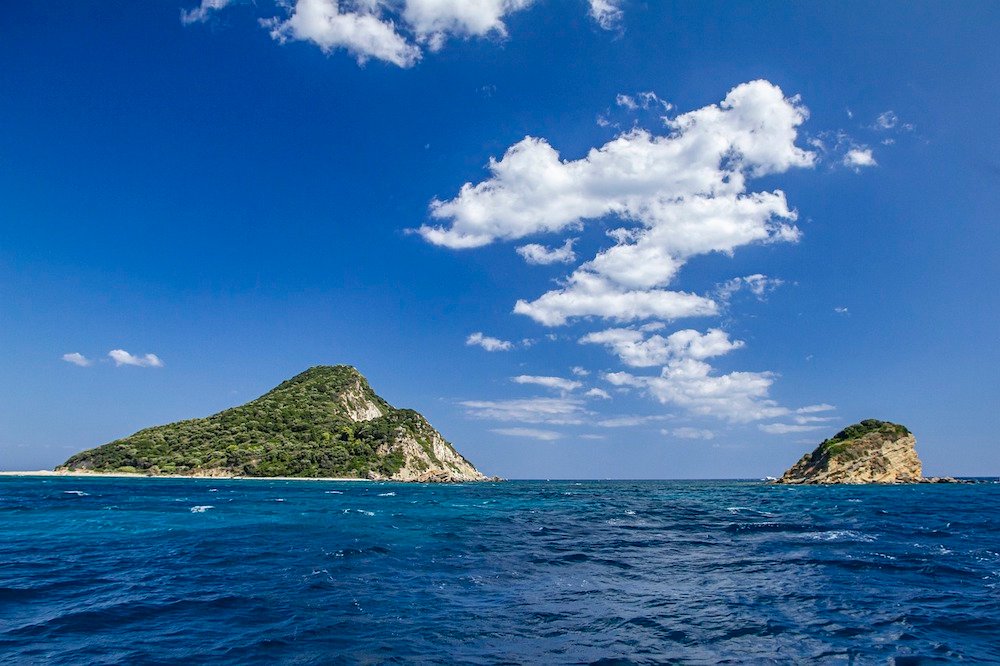
Educational Programs:
Establishing educational programs that provide insights into the history, culture, and ecology of forbidden islands can satisfy curiosity responsibly.
These programs could be conducted in schools, museums, or online platforms, offering a deeper understanding while emphasizing the need for preservation.
Virtual Experiences:
Advancements in technology enable the creation of immersive virtual experiences.
These experiences, whether through virtual reality or interactive online platforms, allow the public to explore forbidden islands from the comfort of their homes.
Virtual tours, documentaries, and interactive websites contribute to responsible curiosity satisfaction.
Role of Travel Writers, Bloggers, and Influencers:
Promoting Responsible Exploration:
Travel writers, bloggers, and influencers play a pivotal role in shaping public perceptions.
By promoting responsible exploration and highlighting the reasons behind access restrictions, they can influence their audience to approach forbidden islands with a mindful and respectful mindset.
Sharing Educational Content:
Collaboration with travel content creators to share educational content about forbidden islands can bridge the gap between curiosity and responsible exploration.
Engaging narratives, documentaries, and insightful articles can contribute to a broader understanding of the challenges and significance associated with these secluded places.
Conclusion
In a world where the desire to explore knows no bounds, these 10 forbidden islands stand as a testament to the importance of preservation, safety, and respect for the indigenous cultures and delicate ecosystems that inhabit these remote places.
While our curiosity is high, we must also recognize the significance of these restrictions and the reasons behind them.
As travelers, it’s essential to honor the boundaries set by nature, history, and the authorities.
These forbidden islands, with their rich and often enigmatic stories, remind us that some mysteries are best left untouched, and some places are meant to remain forever forbidden.

FAQ’s About The World’s Most Forbidden Islands
What is the most forbidden island in the world?
One of the most forbidden islands in the world is North Sentinel Island, situated in the Andaman Islands in the Bay of Bengal.
It is renowned for its isolation and the Sentinelese people, an indigenous tribe with a history of rejecting contact with the outside world.
The Sentinalese have lived on the island for thousands of years, maintaining their traditional way of life.
Why should I not visit these forbidden islands?
- Preservation of Ecosystems: Many forbidden islands have unique and fragile ecosystems that can be disrupted by human presence. Visiting these areas could lead to irreparable damage to the flora and fauna.
- Protection of Indigenous Cultures: Some islands are home to indigenous communities that have chosen to remain isolated. Visiting these areas could endanger their way of life, expose them to diseases, or disrupt their cultural practices.
- Safety Concerns: Certain islands may pose safety risks to visitors due to unstable infrastructure, hazardous materials, or dangerous wildlife. Access restrictions are in place to prevent accidents and ensure the well-being of individuals.
- Respect for Cultural Heritage: Forbidden islands often have historical or cultural significance. Respecting access restrictions helps preserve the heritage of these places and prevents the disturbance of artifacts or sites.
- Ethical and Legal Considerations: Violating access restrictions on forbidden islands may have legal consequences. Respecting these restrictions demonstrates ethical conduct and adherence to international laws and treaties.
- Minimization of Impact: Limiting visitation to these islands helps minimize the impact of tourism on their natural beauty and cultural integrity. Sustainable tourism practices are essential to maintain the allure of these forbidden places.





